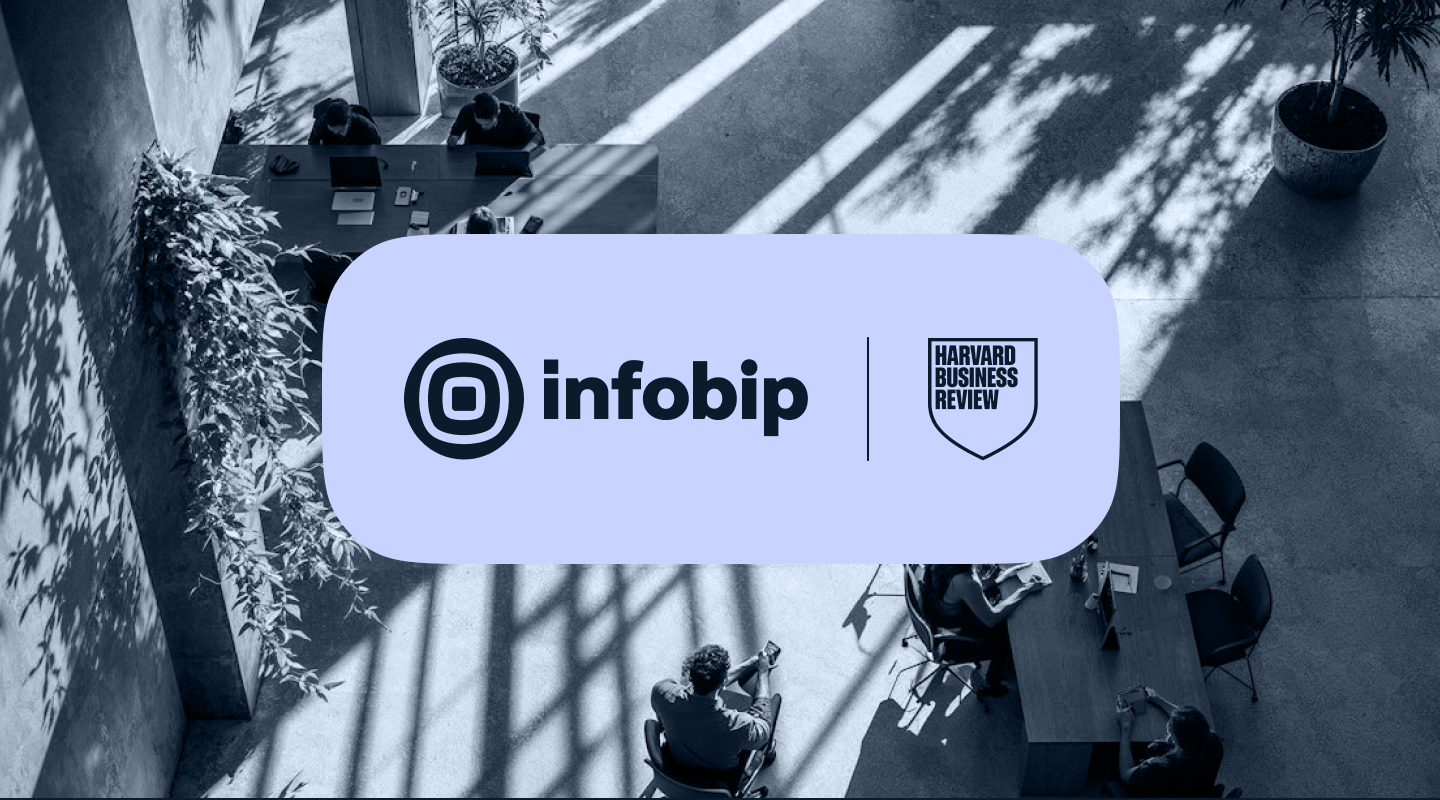Make every season count: A strategic guide to seasonal marketing
Learn how to create compelling marketing campaigns that resonate with your audience, regardless of the season.

There’s a reason why certain times of year feel more alive. The lead-up to a holiday, the start of summer, even the quiet lull of January, each brings its own energy. Seasonal marketing gives you a way to tap into those moments and turn them into meaningful campaigns.
In this guide, we’ll show you how to build effective seasonal marketing campaigns that engage your audience and drive results.
What is seasonal marketing?
Seasonal marketing is a strategy that aligns your campaigns with specific times of the year. Think holidays, cultural events, or recurring seasonal shifts like summer vacations or back-to-school.
Whether it’s a winter holiday sale, a Ramadan campaign, or a summer product launch, seasonal marketing works because it taps into existing demand and sentiment. These are times when people are already more engaged, more emotional, and more likely to buy.
So which seasonal moments should you plan for? Let’s explore the key holidays and events that can inspire your next campaign.

Key holidays and events to build seasonal campaigns around
Don’t focus only on the “big” global holidays. The most impactful seasonal marketing campaigns tap into moments, big or small, global or local, that align with your audience’s values, habits, and expectations.
Here’s a quick reference table to guide your seasonal campaign planning:
| Holiday/Event | Seasonality focus |
|---|---|
| New Year’s Eve | Renewal, fresh starts, goal-setting |
| Valentine’s Day | Love, relationships, gifting |
| Ramadan & Eid | Reflection, generosity, family connection |
| Easter | Rebirth, spring renewal, family gatherings |
| Mother’s Day | Gratitude, appreciation, emotional bonding |
| Father’s Day | Celebration of support, connection, appreciation |
| Summer sales / Summer fridays | Freedom, fun, travel, outdoor lifestyle |
| Back to school | Preparation, learning, new routines |
| Spring cleaning | Fresh starts, organization, simplicity |
| Winter prep | Planning, cozy comfort, protection |
| Halloween | Playfulness, surprise, fear & fun |
| Diwali | Light over darkness, prosperity, celebration |
| Chinese New Year | Luck, renewal, cultural tradition |
| St. Patrick’s Day | Luck, fun, community celebration |
| Black Friday / Cyber Monday | Deals, urgency, impulse shopping |
| Singles’ Day (11.11) | Self-gifting, independence, ecommerce surge |
| Amazon Prime Day | Limited-time deals, convenience, loyalty |
| Christmas | Tradition, generosity, nostalgia, family warmth |
| Hanukkah | Light, celebration, cultural connection |
| Kwanzaa | Community, heritage, unity |
| Boxing Day | Extended deals, post-holiday shopping |
| Graduation season | Accomplishment, transitions, gifting |
| Earth Day | Sustainability, awareness, responsibility |
| International Women’s Day | Empowerment, equality, celebration |
| World Health Day | Wellness, prevention, lifestyle awareness |
| Pride Month | Identity, inclusivity, community |
Not every holiday will be relevant to your audience, but the right ones can unlock campaigns that feel timely, thoughtful, and incredibly effective.
Real-world examples of seasonal marketing campaigns
Now that you’ve seen which seasonal moments to target, let’s look at how real brands have created memorable campaigns by tapping into emotion, culture, and context, not just timing.
Puma India’s Black Friday campaign
To grab attention during Black Friday, Puma India launched a bold campaign that blurred reality and fiction. They staged fake pop-up stores, altered their website, and even used lookalikes of famous brand ambassadors like Virat Kohli and Yuvraj Singh.
The twist? These “spoofs” were meant to highlight that while everything else could be faked, Puma’s Black Friday deals were the real thing.
Why it worked: It played into internet culture, used humor and surprise, and created major social media buzz.
John Lewis’s Christmas campaign
UK retailer John Lewis is known for its emotionally charged Christmas ads. In 2019, they introduced Edgar, a dragon who couldn’t control his fire and accidentally ruined holiday traditions, until a friend found the perfect gift: a traditional Christmas pudding that he lights up for the rest of the village. The campaign extended beyond the ad, featuring Snapchat filters, branded toys, pajamas, and more.
Why it worked: Heartfelt storytelling, cross-channel activation, and strong emotional appeal made it unforgettable.
Snickers + Lemonade’s Halloween campaign
Snickers teamed with insurance firm Lemonade to protect homeowners from any unwanted Halloween trickery. According to Lemonade, burglaries and vandalism are, on average, the highest around Halloween.
To provide peace of mind, they partnered with Snickers to “protect homeowners from tricks with the best treat, full-size Snickers,” and invest in Lemonade insurance.
Why it worked: Unexpected brand pairing + real-world tension (tricks vs. treats) = standout seasonal relevance.
Cadbury 5 Stars’ Valentine’s Day Alibi campaign
To help single people escape Valentine’s Day pressure, Cadbury 5 Star created a fictional island named My Cousin’s Wedding. Making it the perfect alibi for singles to avoid the dreadful question, “What are your plans this Valentine’s?”
When buying the special Valentine’s Day Cadbury 5 Star pack, consumers could scan the QR code and mine coins to stand a chance to bid to stay on the island or win other gifts.
There was even a VR experience and a fake embassy set up for full immersion.
Why it worked: It flipped expectations with humor, tapped into cultural tension, and rewarded participation.
Carlsberg’s Easter campaign
The (chocolate) egg is a symbol of Easter. Carlsberg built an actual bar made entirely out of chocolate, complete with chocolate glasses and taps pouring real beer. The pop-up drew huge crowds and media attention.
Why it worked: A clever twist on Easter traditions combined novelty and experience to drive brand love.
Why do you need a seasonal marketing campaign?
Whether you’re a global brand or a growing business, aligning your campaigns with seasonal moments can unlock new opportunities for awareness, engagement, and sales. Here’s why seasonal marketing works:
1. It captures seasonal excitement
Every season comes with its own emotional energy. Whether it’s back-to-school shopping or the cozy sentiment of the holidays, your audience is already emotionally invested.
Seasonal campaigns let you align with that energy, so your message feels timely, not intrusive. When you show up in the right context, your brand becomes part of the moment.
2. It increases brand visibility
Unique, out-of-the-box and visually appealing campaigns tend to stand out more and attract attention, especially when they use bold visuals, clever storytelling, or culturally relevant humor.
Think of how John Lewis’ Christmas ads or Cadbury’s Valentine’s campaign lingered in people’s minds, not just because of the product, but because of the story they told.
3. It drives purchases when people are ready to spend
In the holiday season, we all want to recognize our family and friends and give them a special gift, but at the same time, save money. A well-timed campaign with the right offer can tip customers from consideration to conversion. Bonus points if you personalize it to what they actually want.
4. It strengthens emotional connection
Seasonal campaigns tap into the emotions that come with tradition, nostalgia, celebration, or even stress. From celebrating shared traditions to acknowledging overlooked moments, these campaigns create emotional resonance. Over time, that kind of connection drives not just sales, but loyalty.
How to create a seasonal marketing campaign?
Now that you have seen some of the most popular seasonal marketing campaigns and why it matters, let’s discuss how you can create one.
Understand your audience
Seasonal marketing only works when it resonates. That starts with knowing who your customers are, what they celebrate, and how they behave during specific times of the year.
- Do they shop early or last-minute?
- Are they more active on mobile, email, or social?
- Which holidays or cultural moments matter most to them?
Tip: Use your customer data platform (CDP) or historical engagement data to personalize messaging by region, behavior, and past purchases.
Research your top competitors
Look at what brands in your space, and outside of it, are doing. Are they running flash sales? Launching limited editions? Partnering with influencers? Analyzing what works (and what feels overdone) can spark new ideas and help you spot untapped opportunities.
Tip: Use social media to track seasonal content themes.
Plan ahead and build momentum
Start early. The earlier you plan, the more runway you’ll have to create impact. Give yourself at least 1–3 months to prepare (longer for major holiday campaigns).
Map out:
Then build a content calendar to map your rollout. Include teaser content, countdowns, day-of promotions, and follow-ups.
Tip: Use a campaign calendar to schedule teasers, countdowns, launch day promotions, and post-event follow-ups.
Personalize the message
Not every customer celebrates the same holiday or experiences the same season. A single message won’t cut it.
Segment your audience and tailor messaging based on:
- Geography or language
- Past engagement or purchase behavior
- Preferred channel or device
Example: Someone who bought winter gear in October last year might get an early access promo this year via SMS.
Create urgency (without pressure)
Seasonal campaigns thrive on timeliness, but it’s not just about discounts.
Use:
- Countdown timers
- “Only X left” inventory messages
- Early access or loyalty perks
- “Ends tonight” reminders across SMS, RCS, Email, and social
Tip: Make sure it feels authentic, audiences can spot fake scarcity.
Track, test, and learn
Measure everything. Clicks, conversions, revenue, channel performance, opt-outs. Then use it to improve your next campaign. A/B test subject lines, offers, timing, and creatives. Even small tweaks can dramatically boost performance.
Tip: Create a seasonal playbook after each campaign to record insights and repeat what worked.
Tactics and channels to maximize reach
A well-timed seasonal campaign is only as strong as its distribution. To maximize engagement, you need to reach your audience on the channels they actually use and tailor your message for each one.
Here’s how to get the most out of every touchpoint:
Use SMS for speed and urgency
Text messages cut through the noise. With open rates of over 90%, SMS is ideal for limited-time offers, countdowns, and last-minute reminders during seasonal peaks.
Best for:
- Flash sales (Black Friday, Singles’ Day)
- Back-in-stock or low-inventory alerts
- Holiday shipping cutoffs
- Personalized discount codes
Tip: Keep it short, timely, and include a clear CTA like “Shop now” or “Claim your code.”
Use Email for storytelling and segmentation
Email is still one of the most effective channels for seasonal marketing, especially when you segment your audience and build narrative-driven campaigns.
Best for:
- Holiday gift guides
- Pre-sale early access
- Loyalty exclusives
- Long-form product education
Tip: Send a series, not just one email. Use a teaser, a launch message, and a follow-up/reminder.
Use digital messaging apps for conversational engagement
In many markets, messaging apps are the preferred way to communicate. Channels like Viber and WhatsApp allow brands to deliver rich, conversational experiences, perfect for high-value interactions during seasonal moments.
Best for:
- Personalized recommendations
- Holiday promotions with rich media (GIFs, product carousels)
- Order tracking, delivery updates, or support
- Loyalty program engagement or exclusive offers
Tip: Take advantage of features like buttons, quick replies, and images to create low-friction, high-engagement conversations that feel helpful rather than intrusive.
Use push notifications for immediacy
Push notifications, especially app-based, are powerful for short, actionable updates tied to seasonal urgency.
Best for:
- Daily deals
- Countdown reminders
- Event-based updates (e.g. “Sale ends in 2 hours”)
Tip: Be selective. Too many pushes can lead to opt-outs. Especially during the busy holiday season.
Combine channels for full-funnel impact
The most effective seasonal campaigns coordinate multiple touchpoints. Use a mix of channels to guide your audience through the entire journey, from awareness to conversion to retention.
Example flow:
- Email teaser campaign announcing early access
- SMS day-of reminder with a direct link
- Digital messaging follow-up (e.g. WhatsApp, Viber) follow-up with support or product recommendations
- Push notification for final countdown
Tip: Use automation tools to sequence and personalize each touchpoint based on behavior.
Checklist to get started with your seasonal campaign
Before you launch, use this checklist to make sure your seasonal campaign is strategically planned, personalized, and ready to perform.
Strategy and planning
- Identify key holidays or events that align with your audience
- Define your campaign goals (awareness, sales, engagement, etc.)
- Research competitor campaigns and current trends
- Choose your core message and seasonal theme
- Set campaign start and end dates
Audience targeting and personalization
- Segment your audience based on location, behavior, or preferences
- Tailor offers and messaging to each segment
- Localize for different markets or languages as needed
- Ensure cultural relevance and sensitivity
Channel selection and content
- Choose channels based on audience preferences (SMS, Email, WhatsApp, Viber, RCS, push, and others)
- Create and schedule campaign content for each channel
- Align creative assets with the seasonal theme (copy, images, landing pages)
- Add urgency with countdowns, limited-time offers, or early access
Execution and optimization
- Test messages, links, and visuals before launch
- Monitor campaign performance in real time
- Optimize based on click-through, open rates, or conversions
- Collect insights for post-campaign reporting and future planning
Make every season count
The calendar is full of moments that matter to your audience. From major holidays to overlooked opportunities, seasonal campaigns give you a chance to be more relevant, more timely, and more memorable.
When you combine great timing with the right message and the right channel, you don’t just win attention; you build trust, spark action, and drive real results.
Delivering that kind of experience across multiple touchpoints requires smart orchestration and seamless execution.
That’s where Infobip’s Customer Experience Optimization Platform (CXOP) comes in to help.
CXOP helps you simplify, scale, and personalize your seasonal campaigns, all from one place. Whether you’re launching a time-sensitive holiday offer or managing a full-funnel customer journey, it gives you the tools to move faster, connect smarter, and optimize as you go.
So, start early. Stay flexible. And keep learning from every campaign. Because when you make every season count, every campaign becomes a chance to grow.
Related content:

Cyber Week 2025: What 12.2 billion interactions reveal about how shoppers bought, browsed, and interacted this season.
The 2025 shopping season wasn’t just bigger. It was smarter, more digital, and more AI-assisted, something we saw firsthand as 12.2 billion interactions moved across our platform during Cyber Week.
- Trends and Insights.

6 ways to deliver thrilling Halloween marketing campaigns.
Tricks, treats, and big results. With personalized messages, omnichannel strategies and AI-powered campaigns, customer engagement takes the spotlight this Halloween. Discover how.
- Blog.
- Best Practices.
- Conversational experience.
- Retail.

Singles' Day trends 2025: Key insights for eCommerce success.
Discover the top Singles’ Day trends for 2025, reshaping global eCommerce and customer engagement. Learn how AI, personalization, and omnichannel strategies are driving the biggest shopping day in the world.
- Blog.
- Trends and Insights.
- eCommerce.
- eCommerce.

Omnichannel retail strategy for transformed customer experiences.
With the right omnichannel retail strategy, you can personalize every step of the customer journey and create a smoother path to purchase and loyalty. Explore how to make it happen.
- Blog.
- Best Practices.
- Retail.

What is phygital marketing? 11 examples of phygital experiences.
Let's explore everything you need to know about phygital marketing and how it can help you build a successful marketing strategy.
- Blog.
- Inspiration.
- People CDP – customer data.

Retailtainment 101: How to create immersive customer experiences.
Retailtainment helps transform the retail industry from a place of transaction to a hub of experience. Join us as we explore the strategies, examples, and benefits and help you discover how to create an entertainment-rich environment that captivates your customers.
- Awareness.
- Retail.
- Retail.

Ramadan marketing strategies: How to connect with customers in 2026.
Discover the latest consumer shopping habits in Ramadan and find out how conversational marketing can help you drive sales and thrive as a brand.
- Blog.
- Trends and Insights.
- Marketing.

10 examples of Valentine’s Day marketing messages that spark conversation .
Discover how conversational marketing can help you build meaningful customer connections this Valentine's day.
- Blog.
- Inspiration.
- Marketing.

Serial returners and the future of eCommerce: A guide for businesses.
Discover the impact of serial returners on businesses. Learn the reasons behind excessive returns and how they affect your bottom line.
- Best Practices.
- Answers – Chatbot Builder.
- Moments – Customer Engagement.
- People CDP – customer data.
- eCommerce.
- Retail.








